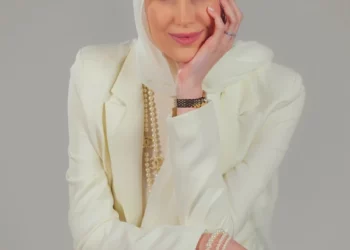Ever wondered what are the differences between Old Dubai vs New Dubai?
Dubai, a city of wonders and modern marvels, is a fascinating blend of old-world charm and futuristic innovations.
With its skyline adorned by towering skyscrapers and its streets lined with traditional souks, Dubai beckons travelers to explore the contrasting realms of Old Dubai and New Dubai.
This article takes you on a captivating journey through these two facets of the city, delving into their property types, amenities, apartments, villas, and property prices.
Old Dubai: A Glimpse into Heritage

Stepping Back in Time
Nestled along the serene Dubai Creek, Old Dubai is a window to the city’s rich cultural heritage.
Divided into six charming districts – Yansoon, Reehan, Zafran, Miska, Zanzebeel, and Kamoon –
Old Dubai is a treasure trove of low-rise apartments that proudly display exquisite Arabian architecture.
The heart of this historic district beats within the traditional souks, including the enticing Spice Souk and the glimmering Gold Souk.
As you stroll through its narrow lanes, landmarks like the Dubai Museum and Al Fahidi’s historic neighborhood transport you to a bygone era.
Discovering the Gems
Old Dubai is a haven for history enthusiasts.
It’s where you can explore the intricate architecture of structures like the Grand Mosque and the Jumeirah Mosque, blending Emirati and Persian styles.
The Dubai Creek waterfront promenade offers a leisurely escape with traditional dhows and water taxis. In the midst of these ancient charms, you can savor traditional Emirati cuisine at local eateries.
New Dubai: The Modern Oasis

Rising to New Heights
In stark contrast, New Dubai emerges as a modern metropolis of soaring skyscrapers and luxurious living.
Dominated by iconic landmarks like the Burj Khalifa, the world’s tallest building, and the bustling Dubai Marina, this part of the city showcases the epitome of urban development.
Gleaming high-rise buildings house upscale apartments and lavish villas, adorned with state-of-the-art facilities.
Embracing Luxury
New Dubai caters to those who revel in luxury and modernity. High-end shopping malls like the Dubai Mall and Mall of the Emirates offer not just retail therapy, but a holistic experience.
Lavish boutiques, entertainment options, and gourmet dining establishments redefine the art of indulgence.
The city’s world-renowned hotels, such as the Burj Al Arab, tantalize with opulent accommodations and fine dining.
Old Dubai vs New Dubai: Comparing Property Types

Old Dubai’s Timeless Appeal
In Old Dubai, traditional architectural beauty is prevalent. Vintage buildings, historical apartments, and villas hark back to Dubai’s roots.
This district is home to revered developers such as Emaar Properties and Nakheel Properties. Commercial spaces thrive, and the charm of the past envelops every corner.
New Dubai’s Contemporary Brilliance
New Dubai takes modern living to another level. The towering skyscrapers in Dubai Marina and Business Bay provide a high-rise haven.
Apartments come with 24×7 security, pools, gyms, and meticulously designed landscapes. Villas in opulent communities like Palm Jumeirah and Emirates Hills redefine luxury living.
Old Dubai vs New Dubai: Amenities
Old Dubai’s Cultural Tapestry
Old Dubai invites you to step into history at the Al Fahidi district and Dubai Museum.
The Dubai Creek promenade offers tranquil views, while traditional Emirati cuisine tantalizes taste buds. Immerse yourself in the vibrant cultural events that celebrate the city’s traditions.
New Dubai’s Extravaganza
In New Dubai, vibrant beaches like Jumeirah Beach and Kite Beach await sun-seekers. World-class theme parks like IMG Worlds of Adventure and Dubai Global Village beckon thrill-seekers.
The city’s nightlife flourishes with upscale restaurants and high-end nightclubs, particularly in Downtown Dubai.
Dubai, a city that stands as a testament to human innovation and ambition, offers a fascinating contrast between its two distinct faces – Old Dubai and New Dubai.
Each facet holds a unique charm that beckons visitors and residents alike, promising a journey through time and modernity.
As we conclude our exploration of these two worlds, let’s reflect on the captivating essence that defines Dubai’s past and present.
Old Dubai, nestled along the tranquil Dubai Creek, exudes an aura of nostalgia and authenticity. Its low-rise architecture, woven intricately into the fabric of the city, pays homage to the Emirati culture and history.
The bustling traditional souks, where the air is infused with the scents of spices and the glint of gold, evoke a sense of wanderlust for times gone by.
Strolling through the historic districts, one can almost hear the whispers of the past, carried by the wind through the ancient alleyways.
The landmarks of Old Dubai, such as the Dubai Museum and the Al Fahidi historic neighborhood, are not merely structures; they are portals that transport us to an era of simplicity and heritage.
The Dubai Creek waterfront, adorned with traditional dhows and water taxis, tells stories of trade and connection that have shaped the city’s identity.
The authenticity of Old Dubai offers a respite from the rapid pace of the modern world, allowing us to pause and reflect on the roots from which Dubai has blossomed.
As the sun sets over the glittering skyscrapers of New Dubai, a vibrant energy envelops the city.
The towering Burj Khalifa stands as a testament to human ingenuity and determination, reaching toward the sky with a message of boundless possibilities.
New Dubai is the playground of modernity, where cutting-edge architecture, world-class amenities, and a cosmopolitan lifestyle converge.
The high-end malls and luxury boutiques redefine shopping, transforming it into an experience that is both opulent and enticing.
In New Dubai, the nightlife comes alive with the glow of neon lights and the beats of music that transcend borders.
The upscale restaurants, pubs, and nightclubs invite people from around the world to revel in the city’s vibrant energy.
The beaches, with their golden sands and crystal-clear waters, offer an escape from the urban hustle, inviting residents and visitors to bask in the lap of luxury by the Arabian Sea.
Dubai, with its dual identity, teaches us the art of harmonizing the old and the new, the traditional and the modern.
It stands as a global example of how progress need not erase heritage, and how a city can evolve without losing sight of its origins.
The coexistence of Old Dubai and New Dubai is a testament to the city’s ability to honor its past while embracing the future.
As we conclude our exploration, let’s remember that Dubai is not merely a city of skyscrapers; it’s a city of stories.
The stories of fishermen who once sailed the Dubai Creek, of traders who exchanged goods on its shores, and of dreamers who built an oasis in the desert.
Each facet – Old Dubai and New Dubai – adds to the symphony that is Dubai, a city that invites us to appreciate the beauty of contrasts and the magic of transformation.













